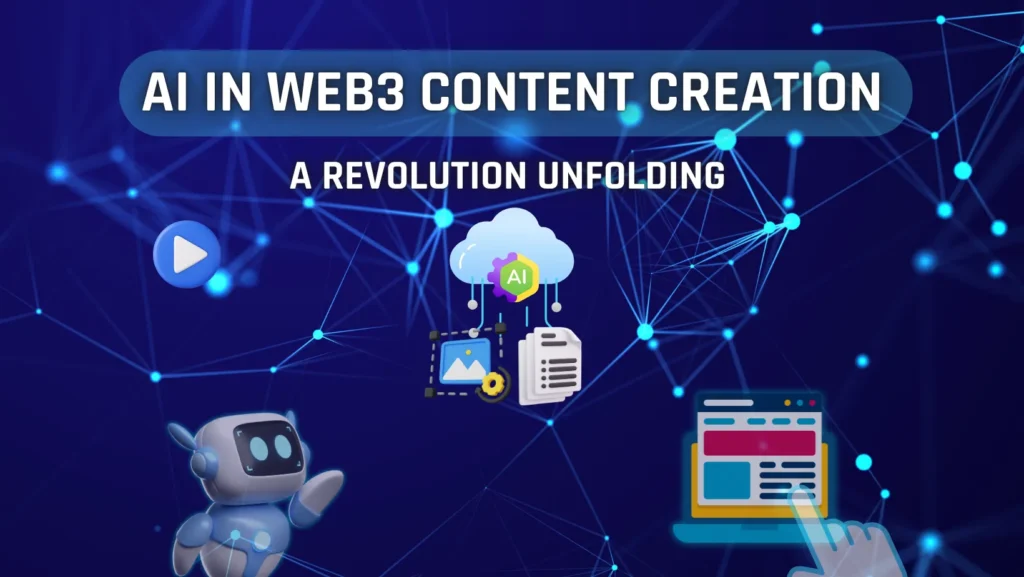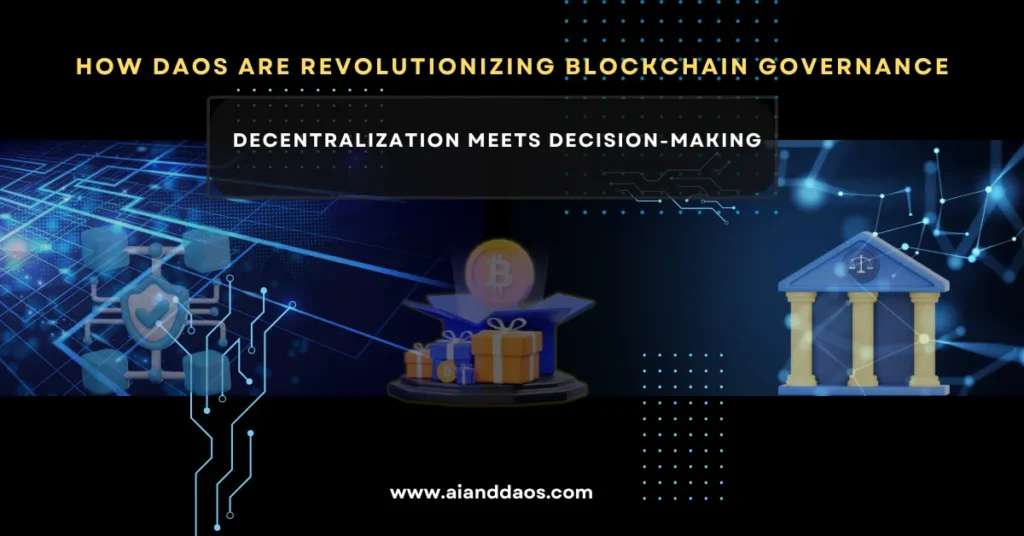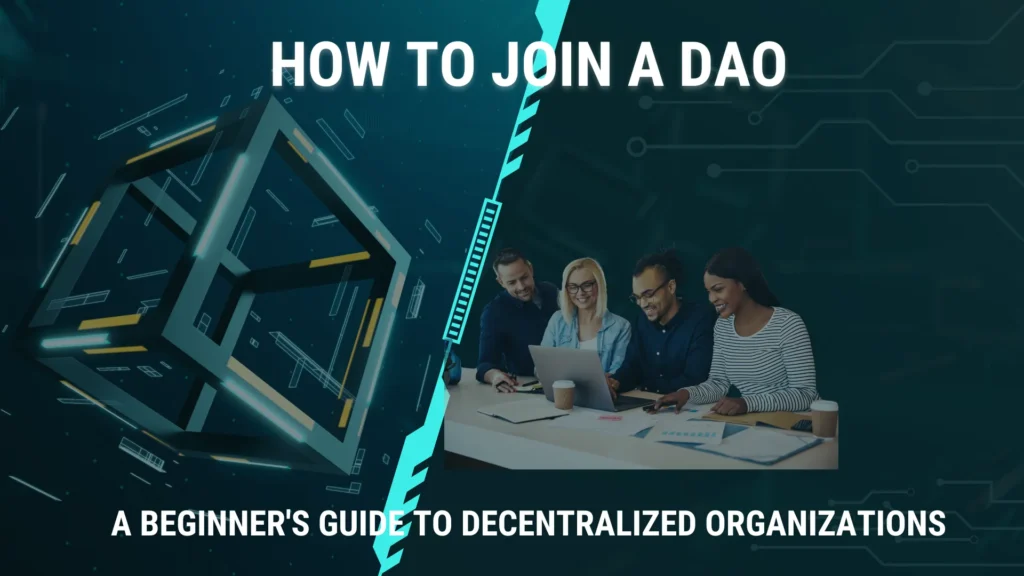Redefining Content Creation with AI in Web3
AI in Web3 content creation is already changing the way we create, share, and own content online. Whether you’re a writer, artist, or creator of any kind, this shift opens up exciting new possibilities.
Add blockchain to the mix, and you can turn your content into NFTs, get paid instantly through smart contracts, and even join DAOs where creators help shape the platform’s direction.
This new creator economy is more open, fair, and community-driven—and the best part? You don’t need to be a tech expert to jump in. In this article, we’ll explore how AI and Web3 can transform your content creation, how to use the right tools, and how to make money from your content.
Why Web3 and DAOs Need AI for Content Creation
When I joined my first DAO, I was overwhelmed. Messages flew in from every direction—governance proposals, community updates, contributor calls. Everyone was passionate, but I couldn’t keep up with the pace or volume of content.
That’s when I realized: Web3 moves fast, but its content creation systems need help.
This is where AI in Web3 quietly steps in.
Instead of relying solely on contributors to summarize discussions or write proposals, AI tools were automating recaps, drafting tweets, and generating titles for DAO blogs. It wasn’t about replacing people—it was about scaling their efforts. Content automation gave everyone more space to focus on strategic thinking.
As our DAO expanded, AI became essential behind the scenes. It personalized onboarding experiences, translated community updates into multiple languages, and even created visuals to explain token governance and funding models.
Most importantly, it brought clarity. When votes were cast or funds distributed, AI-powered summaries explained outcomes in plain language—not just spreadsheets or raw data.
So why do DAOs and Web3 need AI for content creation? To keep decentralized communication human, clear, and scalable. Whether it’s personalized onboarding, multilingual content delivery, or transparent governance updates, AI in Web3 content creation is no longer optional—it’s foundational.
Real-World Use Cases of AI in Web3 and DAOs
AI is already making a quiet but powerful impact in the world of Web3 and DAOs, and some of the most interesting changes are happening behind the scenes.
Let’s start with AI-generated whitepapers. In the early stages of a decentralized autonomous organization (DAO) or blockchain-based token project, founders often use tools like ChatGPT or Jasper AI to help draft whitepapers. These AI content creation tools simplify complex topics like tokenomics, decentralized governance, and smart contract structures. This not only saves time but ensures consistency and accessibility for a global, non-technical audience.
Then there’s AI for DAO community management. DAOs like BanklessDAO and DeveloperDAO use AI-powered bots to summarize long governance meetings, draft weekly DAO newsletters, translate multi-language content, and answer FAQs in real-time. These tools enhance scalability and reduce contributor burnout, and informed across time zones.
AI is also reshaping tokenization and royalty management. Some NFT platforms now use AI to track usage rights and automatically distribute royalties to creators whenever digital assets are resold. Platforms like Async Art are combining generative AI with on-chain royalties using blockchain smart contracts, ensuring that creators continue to earn even as their art evolves over time.
From AI content creation in Web3, to automated community support, to decentralized financial automation, these real-world examples show how AI is becoming a critical infrastructure layer. It’s not hype—AI in Web3 is already here, quietly making decentralized systems more efficient, transparent, and user-friendly.
7 Best Tools for DAO Creation and Management.
Blockchain Meets AI: Tackling Challenges and Driving Innovation
In the fast-moving world of AI-generated content, one question keeps popping up:
How do we verify who created what, and who owns it?
This is exactly where blockchain technology becomes essential.
Let’s say someone uses AI tools to generate a whitepaper, music track, or digital artwork. On its own, AI can create, but it can’t guarantee ownership or originality. With blockchain integration, every piece of content can be time-stamped and linked to its original creator through a smart contract. This record is secure, public, and tamper-proof—building trust in a world full of synthetic media.
Then comes the issue of tokenization. Using NFTs (non-fungible tokens) or similar blockchain assets, that content can be turned into a digital product with clear, verifiable ownership. Platforms can automatically track how the asset is shared or sold, and ensure royalties go directly to the creator.
This partnership solves another major challenge: transparency in AI decisions. With decentralized AI systems, blockchain can log how AI models make choices, track data sources, and even enforce ethical guidelines—boosting accountability and reducing bias in machine learning.
In short, AI brings speed, personalization, and automation, while blockchain adds transparency, security, and decentralization. Together, they don’t just solve each other’s flaws—they create a new, more reliable way to build trust in digital content and decision-making.
Ethical Considerations for AI in Decentralized Systems
As we start using AI in Web3 and decentralized platforms, it’s essential to pause and ask—are we building something that’s genuinely fair and trustworthy?
One primary concern is bias. AI models are only as good as the data they’re trained on. If the training data is flawed or one-sided, the AI might make decisions that are unfair or even harmful. And in a DAO, where there’s no central authority, it’s not always clear who’s responsible for fixing that.
Privacy is another big issue. Web3 systems run on open, transparent data. But do users always understand how their data might be used by AI? Without explicit consent, things can get murky.
Then there’s the challenge of explainability. If an AI tool helps approve a proposal or manage funds in a DAO, people need to understand how that decision was made. If it feels like a black box, trust in the system can fade quickly.
That’s why it’s so important to focus on ethical AI—especially in decentralized systems. AI should support communities, not quietly shape them without accountability.
When built thoughtfully, AI can make DAOs more efficient, inclusive, and transparent. But we need to develop with care—because ethics isn’t a side feature; it’s the foundation.
Monetization Opportunities for AI in Web3
If you’re wondering how people are making money with AI in Web3, the answer is—it’s already happening in some pretty creative ways.
One of the most accessible paths is content. DAOs and Web3 startups need help writing blog posts, whitepapers, onboarding guides—you name it. Instead of starting from scratch, they use tools like ChatGPT or Jasper. If you know how to guide these tools, you can offer AI-assisted writing services and earn in crypto. It’s like being a Web3 writer, powered by a digital co-pilot.
Then there are AI bots. Many DAOs rely on bots to summarize proposals, automate translations, or answer community FAQs. If you can build or deploy a useful AI bot, DAOs often reward contributors with tokens or grants.
On platforms like SingularityNET or Ocean Protocol, developers can upload AI models and tokenize them. That means others can use your model—say, for voice recognition or fraud detection—and you get paid every time it runs. Think of it as an AI-powered app store on the blockchain.
AI-generated art is booming, too. Creators are designing NFTs using generative tools, minting them, and earning royalties every time they’re resold. It blends creativity with smart automation—and smart contracts handle the payments.
Even non-coders can earn. Some decentralized projects pay people to train AI by labeling data. It’s like teaching an AI and getting paid for each correct answer.
Unlock Hidden Wealth: Earn Tokens in DAOs with These Proven Methods!.
The Future of AI Monetization in DAOs
The future looks even brighter.
We’ll likely see AI-powered marketplaces, where writers, artists, and developers rent out their AI creations through smart contracts—no middlemen needed. DAOs may start hiring AI agents directly, offering recurring payments for autonomous tools that manage budgets, analyze markets, or moderate communities.
Microtransactions will grow, too—imagine earning a fraction of a token every time your AI bot answers a question or helps vote on a proposal. With blockchain’s transparency, royalties and earnings will be more fair, traceable, and instant.
And as the tools become more user-friendly, expect platforms to emerge that help non-tech users monetize their AI workflows, even if they don’t write code.
So whether you’re a creator, a builder, or just curious—AI in Web3 opens up a whole new economy. And we’re just at the beginning.
Future Predictions: How AI Will Shape Web3 Economies
The future of AI in Web3 isn’t just exciting—it’s transformational.
As decentralized systems grow, artificial intelligence will become a key player in running them more efficiently. Picture DAOs using AI agents to sort proposals, flag scams, manage treasuries, or even suggest better governance models. These AI tools won’t replace human decisions—but they’ll handle the heavy lifting, letting communities scale without chaos.
In decentralized finance (DeFi), AI could automate smarter trading, risk analysis, and portfolio management. This means fewer technical barriers for everyday users, and better tools for experienced traders—driven by transparent, blockchain-powered systems.
AI will also personalize Web3 experiences without invading privacy. Instead of collecting personal data like Web2 platforms, Web3 can use decentralized identity (DID) systems to deliver AI-driven content and recommendations—while keeping users in full control.
When it comes to earning, AI opens up new income streams. Whether you’re tagging data to train models, creating AI-generated NFTs, or contributing content to decentralized platforms, smart contracts can instantly reward your effort. These microtasks could form the backbone of an AI-powered creator economy.
And looking ahead, as AI agents become more autonomous, they may start interacting with other protocols on their own—bidding in NFT auctions, managing assets, or helping users navigate complex dApps in real time.
The key is to build this future ethically—with transparent algorithms, fair token incentives, and community-driven oversight. Done right, AI will become a foundational pillar of decentralized economies, powering everything from governance and finance to creative expression and user onboarding.
10 Top DAO Projects to Watch in 2025.
Beginner-Friendly Tools for AI in Web3
Just getting into AI and Web3? Don’t worry—it’s not as technical as it sounds. You actually don’t need to know how to code to start using AI in this space. In fact, some of the best tools are built for beginners.
Start with the basics. ChatGPT (like the one you’re reading now) and Jasper are amazing for helping you write things. Need to draft a DAO proposal or explain something complex in simple words? These tools have your back.
If you’re into visuals, try Midjourney or DALL·E. You type in a description, and they generate eye-catching images. People are already using them to design NFTs, banners, or even memes for their DAOs.
Need help staying organized? Notion AI can help summarize notes and write reports, while ReclaimAI is great for planning your week—especially if you’re juggling multiple DAO roles.
Want to automate tasks without coding? Platforms like Boto and Autonolas let you build simple workflows—like tracking proposals or sending updates—just by clicking around.
And if your DAO hosts lots of calls or podcasts, tools like Descript make editing and transcribing super easy. You can clean up audio, add subtitles, or even turn calls into blog posts.
These tools are already being used across Web3—by writers, artists, contributors, and creators. They’re a great way to dip your toes into AI without feeling overwhelmed.
The Best ChatGPT Prompts for SEO: Boost Your Rankings with AI-Driven Content
Actionable Steps for DAO Roles to Leverage AI
If you’re part of a DAO—whether you’re writing, managing, designing, or building—AI isn’t just for coders or data scientists. It’s a practical assistant that can help almost everyone work faster, smarter, and with less burnout. Here’s how different roles in a DAO can start using AI right now:
For Content Creators: Draft Smarter, Not Harder
Writing proposals, blogs, or community updates can take hours. Tools like ChatGPT, Jasper, or Notion AI help generate first drafts, rewrite content, and even suggest catchy titles or social posts. You still guide the voice—but AI can do the heavy lifting.
Try this: Ask ChatGPT to turn your DAO proposal into a tweet thread or FAQ page.
Bonus: Use Midjourney or Canva AI to create visuals to go with your content.
For Community Managers: Scale Support Without Burning Out
Managing a community across Discord, Telegram, or forums? AI chatbots like Clerk or BeBot can answer FAQs, onboard new members, and summarize key discussions. Pair this with tools like Otter.ai or Descript to turn recorded calls into clear summaries.
Pro tip: Set up a weekly content digest that AI helps draft automatically.
Next step: Use Notion AI to update community playbooks or contributor guides.
For Governance Leads: Streamline Decision-Making
Voting and proposal tracking get messy fast in growing DAOs. AI can analyze previous governance data, flag inactive voters, or summarize complex proposals in simpler terms. Tools like Tally, DeepDAO, or a GPT bot trained on your governance docs can save hours.
Start small: Ask AI to summarize the last five governance decisions in plain English.
Future-ready: Use AI to simulate “what-if” scenarios before launching a vote.
For Designers and Creatives: Co-Create with AI
Designers don’t need to start from scratch anymore. Tools like DALL·E, Leonardo AI, or RunwayML can turn ideas into visuals—great for NFTs, posters, banners, and even concept art for storytelling.
Experiment: Generate mockups for a DAO campaign with Midjourney using prompts tied to your brand.
Music creators? Tools like Boomy let you compose theme songs or jingles on the fly.
For Treasury & Operations Teams: Predict, Track, Improve
Managing treasury flow and contributor rewards can be complex. AI can help here too. Use Causal, Excel+GPT plugins, or finance-focused dashboards to track spending, predict burn rates, or simulate token rewards over time.
Quick win: Let AI tag expenses by category and flag unusual transactions.
Bigger picture: Create dashboards where AI models suggest payout adjustments based on past output.
Frequently Asked Questions on AI in Web3 Content Creation and DAO Revolution
1. How does AI contribute to content creation in DAOs?
AI helps automate content generation, streamline decision-making, and enhance creative processes in DAOs by providing data-driven insights, generating text, images, and videos, and improving collaboration among decentralized members.
2. What are the main benefits of using AI in Web3 content creation?
AI enhances efficiency, personalization, scalability, and cost-effectiveness. It allows DAOs to create high-quality, engaging content with minimal manual effort while ensuring consistency and adaptability to user preferences.
3. What challenges does AI face in Web3 content creation for DAOs?
Challenges include bias in AI models, ethical concerns, copyright issues, governance complexities, and maintaining decentralization while integrating AI-driven automation.
4. How does AI improve DAO governance and decision-making?
AI-powered analytics and automation help DAOs analyze community votes, predict trends, and provide unbiased recommendations, leading to more informed and efficient decision-making.
5. Will AI replace human creators in Web3 content creation?
No, AI acts as an assistive tool rather than a replacement. It enhances human creativity by automating repetitive tasks, offering insights, and generating ideas, but human oversight remains crucial for originality and ethical considerations.
6. How can DAOs ensure AI-generated content aligns with community values?
DAOs can implement governance frameworks, transparency protocols, and decentralized AI oversight mechanisms to ensure AI-generated content aligns with their mission, ethics, and community standards.
7. What are the future trends of AI in Web3 content creation?
Future trends include AI-driven NFT creation, generative AI for immersive metaverse content, decentralized AI governance, and AI-enhanced decentralized identity solutions.
8: How does AI handle scalability in Web3 content creation?
AI automates high-volume content generation, manages large DAO communities, and streamlines governance processes, reducing human workload.
9: Can AI-generated content be copyrighted in Web3?
Ownership of AI-generated content is still a gray area legally, but blockchain-backed NFTs and smart contracts help secure content rights.
10: How do AI-powered DAOs work?
AI-powered DAOs use machine learning models for governance, automated decision-making, and smart contract execution without human intervention.
11: What are the best AI-powered content monetization strategies?
Tokenizing AI-generated content as NFTs, subscription-based AI-generated newsletters, and AI-curated educational platforms are some effective methods.
12: How does AI improve transparency in decentralized content creation?
AI models integrated with blockchain verification can track content origins, prevent plagiarism, and enhance credibility in DAOs.
13: Can AI replace human writers in Web3?
No, AI assists in automation and optimization.
14: What are the future trends for AI in Web3 content creation?
Expect autonomous AI-powered DAOs, AI-driven content marketplaces, and fully decentralized AI-assisted publishing platforms to grow in the next 5 years.
Conclusion: Embrace the Future with AI in Web3
The future of AI in Web3 content creation isn’t a distant concept—it’s already unfolding across decentralized platforms today. From simplifying content workflows to scaling community engagement, AI is quietly powering the next phase of Web3 innovation.
In DAOs, AI tools automate repetitive tasks like proposal drafting, newsletter writing, and content translation—freeing up humans to focus on creativity and strategy. This helps decentralized communities grow without losing clarity or speed.
For newcomers, AI lowers the learning curve. For developers, it boosts scalability. And for content creators, it unlocks tools that were once only available to large, centralized teams.
This synergy between artificial intelligence and blockchain doesn’t replace human value—it amplifies it. It brings transparency, personalization, and automation into spaces where collaboration is key.
If you’re part of Web3—or just exploring it—this is the moment to lean into what AI can offer. Because in a decentralized future, intelligence and creativity must scale together.



Pingback: AI in Web3 Marketing: The Future of Smart Personalization
Pingback: Will AI Replace Writers? 7 Truths You Must Know [2025]
Pingback: AI Agents in Web3: How Decentralized AI is Powering DAOs
Pingback: AI Content Verification: Ensuring Trust in Web3
Pingback: 10 Ways AI-Powered Personalization is Revolutionizing Web3
Pingback: ChatGPT Prompts for SEO: Boost Rankings & Content